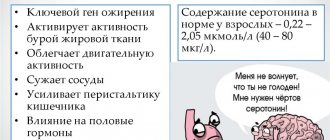Purposes of Abstraction
Human consciousness is designed in such a way that he often perceives an object as a whole , without dividing it into individual components. Abstraction is the ability to separate one characteristic from another and see an object in a new way . Since the word “abstraction” is translated from Latin as distraction , this term is often used to describe avoiding an unpleasant situation. This is not entirely true, because abstraction allows:
- look at the situation from a new angle in order to adequately assess it and make a decision;
- distract yourself from your own feelings regarding a situation or object, which will lead to the formation of a new view of things.
Identification
This goal of abstraction involves keeping the focus of attention on the features that unite one object with another . For example, when experiencing fear of the outcome of a certain event, a person can remember similar situations whose outcome was successful. And understand that his fear is irrational and practically unfounded.
Systematization and division
This goal, on the contrary, is aimed at maintaining the focus of attention on those features that distinguish objects. For example, if one day the outcome of an event was unsuccessful, this does not mean that a similar situation will turn out the same way.
Generalization
Generalization allows you to establish common characteristics of objects and systematize them . For example, if you have a monthly goal, you can divide it into small goals for each day. And then set goals for one year/five/ten years. This way the plan to achieve them will be clearer.
Clarity and specificity
This goal allows you to determine the boundaries of a concept or object (situation) . It makes it possible to increase the efficiency of communication, because people often tend to think for their interlocutor. But in the process of communication, he could mean something completely different from what it might seem.
Creating a sample
The sample is the starting point . It may not exist in the real world, but it serves as an ideal model, a guideline towards which to move. Creating a template is very effective for setting goals. The ability to abstract is an important personality quality that disciplines and allows you to protect yourself from unnecessary worries, and also contributes to success in various areas of life.
Forms of abstract thinking
With abstract thinking, a person operates with different knowledge and mental experiences. Over time, all this came to a certain system. Many phenomena of the world are not subject to sight, hearing or touch (and about some we can say that they do not exist at all as such). But such phenomena are part of human life, and therefore must have at least some form.
There are three main forms of abstract thinking: concept, judgment and inference. Let's talk about them briefly.
Concept
A concept is a thought that conveys a common property of various phenomena. Properties may vary, but be homogeneous and similar, which allows them to be combined into one group. Let's take a car for example. It can be an SUV, sedan or hatchback; Different cars have different shapes, colors, characteristics. But their common feature is that they all have wheels, an engine, a gearbox, etc., and that they can be driven. These characteristics (design, purpose) allow properties to be classified into one group.
And we are taught such things from the cradle. Mom talks about “cat”, and we immediately understand that this is a meowing and purring four-legged animal with a tail, etc. Cats come in different breeds and colors, but they all have common characteristics by which they belong to the general concept of “cat” or “cat”.
Judgment
A person uses judgment with the intention of confirming or disproving something. It can be simple or complex. Here is a simple thing - “the cat meows” - it can be expressed specifically and unambiguously. But the complex one - “the cat began to meow because he was hungry” - can be expressed in several declarative sentences.
Also, propositions can be true or false. True ones reflect the actual state of affairs and are based, as a rule, on the absence of an individual assessment of a person, i.e. he judges objectively. A false judgment becomes when a person expresses his interest based on personal reasons, and not on what is actually happening.
Inference
An inference is a thought formed by two or more judgments. This is a new – more complex judgment. Any inference consists of a premise, a conclusion and a conclusion. The premise is an initial judgment, the conclusion is logical thinking leading to a conclusion.
These three forms of abstract thinking form its basis. We operate all abstractions with their help. But what we have said (forms and types of abstract thinking and abstractions, their goals, etc.) may not be entirely sufficient for understanding abstract thinking and its features, since, in essence, all this is theory. Therefore, it makes sense to talk separately about specific examples.
Types of Abstractions
Abstractions are transformed ideas about an object or phenomenon of the objective world.
- Isolating abstraction. Corresponds to the isolation and fixation of certain features of an object or phenomenon.
- Converting abstraction. Corresponds to the general characteristics of an object or phenomenon (taking into account all the features together).
- Idealization. Corresponds to the replacement of a real goal with a certain idealized image. It is used for the most effective use of all available tools to achieve the designated result.
Analogy
In the very nature of the understanding of facts lies an analogy, connecting the threads of the unknown with the known. An analogy is a probable, plausible conclusion about the similarity of two objects in some characteristic based on their established similarity in other characteristics. The more similar features the compared objects have and the more significant these features are, the more accurate the conclusion. Analogies provide only probable conclusions, which play a huge role in cognition, since they lead to the formation of hypotheses - scientific guesses and assumptions, which during the subsequent stage of research and evidence can turn into scientific theories. An analogy with what we know helps us understand what is unknown. By analogy with the artificial selection of the best breeds of domestic animals, Charles Darwin formulated the principle of natural selection in the animal and plant world. Analogies with the mechanism of action of the muscles, brain, and sensory organs of animals and humans prompted the invention of many technical structures: excavators, robots, logical machines.
Abstraction Methods
Abstraction methods are aimed at creating an optimal environment for setting and achieving goals, as well as changing a person’s emotional state. By perceiving circumstances adequately and abstracting from the unimportant, you can avoid many unpleasant situations in the communicative sphere.
- Creating a template. Any property, characteristic of an object or phenomenon can be used as a sample , which will become the starting point . Using it, you can see other properties of an object and view it from a different angle.
- Self-control. The ability to control one’s actions and emotions is the most important personality quality, which allows one to concentrate on one’s experiences and distract from external stimuli. Or, on the contrary, in case of strong emotional shocks, “switch” to the perception of the outside world.
- Adequate assessment of the situation/phenomenon/object. This method allows you to soberly assess a particular object /situation/person without giving in to your emotions. Adequate self-esteem can also be included here, since by assessing yourself honestly, you can see your shortcomings in time and correct them, while keeping your attention on your strengths.
- Imagination. Visualization techniques help to cope with negative experiences and shift the focus of attention from the negative aspects of a situation/phenomenon/object to its positive aspects. Sometimes a person needs time to perceive what is happening adequately. And visualization allows you to stop in time so as not to do something stupid. This method helps when controlling emotions and behavior seems impossible.
- Development of concentration skills. Focusing on the positive is a skill that is very useful in life. Concentrating on the negative aspects, on the contrary, can lead to depression . To develop this skill, you need to periodically rethink what is happening and monitor your reactions.
The ability to abstract is closely related to positive thinking , which involves looking for advantages in even difficult situations. Any difficulty is a task that involves acquiring new skills and new experience. Therefore, inner peace, developing concentration, and looking at it from a different angle are the best ways to deal with the problem.
Abstraction is a way that allows you to achieve your goal and maintain a positive attitude.
The ability to abstraction contributes to the development of such important qualities as confidence, concentration, gratitude, calmness . Abstraction has a positive effect on a person’s mental health, because this technique is aimed at caring for one’s inner world.
What it is?
Abstract thinking is considered the highest form of the thought process. Smells, sounds, tastes, images, tactile sensations - in order to understand their essence, a person must certainly think. Our brain “digests” any information and stores it in the head in the form of certain “files” or clusters. Abstraction is based on them. In simple words, this can be defined as follows: a person, in order to think abstractly, uses the knowledge he once acquired as a basis, and thinks out the rest using his own imagination.
With such a complex, but fairly accurate definition, it is impossible to do without clarification. Let's look at how this works using a specific example. You see a certain guy on a bench who, in the midst of a working day, is relaxing with a bottle of foam. The first thing that comes to mind is that we have a parasite prone to alcoholism. Features of abstract thinking help us look at it differently.
Perhaps it’s a person’s first day of vacation or his day off falls on weekdays, and he only drinks non-alcoholic beer and solely to freshen up, because it’s hot outside. All this may well be exactly one way or another.
An apparatus is a person whose brain does not accept any thoughts that contradict his first and, as it seems to him, the only correct impression of what is happening. This often leads to people driving themselves into an emotional and life impasse. They are not looking for a way out of it, because they are sure that they are following a precisely calibrated path.
Abstract thinking helps us act logically. His main weapon is his word. This is where it mainly differs from what animals have. Another name for this type of thinking is conceptual, that is, a person puts his concepts into a certain logical chain, and then expresses his thoughts. Moreover, for this it is not necessary to enter into a conversation with someone - it can also be a dialogue with oneself.
Sometimes it looks like the babble of a small child - “oh, dog, I’m afraid.” But more often it is a more detailed text, which over the years and as we gain life experience becomes more colorful and varied.
With age, a person with developed abstract thinking becomes less categorical. He allows for several points of view on the same issue, knows how to recognize the validity of his opponents’ arguments, and admits the possibility of his own being wrong on certain issues. All this happens due to the evolution of the brain of each individual individual.
Thinking abstractly is the ability of every person
To summarize the topic discussed, we now definitely know what abstraction is - a mental, conscious distraction from the properties of an object, due to which a new idea about it appears or a logical concept is formed.
The ability to apply abstraction in everyday life is inherent in a person from birth. In many ways, language skills and the development of the language itself play a big role here. Thus, when thoughts “flow” in an abstract order, consciousness does not focus on individual features of an object, characterizing it according to general indicators (for example, “fruit”). In contrast to the abstract, science provides arguments for the concrete - in this case, consciousness expands the boundaries of understanding, looking for additional properties (not just “fruit”, but “orange” or “sweet and sour apple”).
Application – in everything
The method of scientific abstraction is used in many areas: politics, mathematics, logic. We have already learned that under the general concept of abstraction lies a distraction from external phenomena in order to highlight unimportant details or the essence of the subject itself. Thanks to such an “outside view,” scientific concepts are born, which, in turn, form unified properties and connections that are combined into categories.
Thus, scientific abstraction can be traced in economics. In the world there are millions of different food and non-food products that people need every day. They all differ in many characteristics and properties. But, moving away from their endless comparisons, man involuntarily united them into a single category - goods as products intended for sale.
Scientific abstraction is noticeable in construction. Every construction includes a detailed calculation that takes into account the features of the future building. But exact geometric correspondences, as well as the strict interaction of all its individual components, are not always 100% feasible - it is either theoretically impossible or practically unacceptable due to excessive complexity. Because of this, using the method of scientific abstraction, the structure is schematized. Alleged minor factors are excluded, which, in turn, does not affect the accuracy and reliability of the calculations performed.
Education
That damned one-syllable word "everything" has caused more problems for mathematicians than any other word in the dictionary. THIS. Bell
Korzybski wrote that you can learn anything you want if the structure of the subject of study is open to you. Structure, accordingly, becomes the only possible content of knowledge, and all scientific technical subtleties, no matter how difficult and time-consuming they may be, become simply necessary tools for searching for structure, and these tools in themselves do not have any special value and are not necessary for “ knowledge”, as soon as a structure is discovered for a specific case (“science and sanity” by A. Korzybski). The structure of the language is visible in multi-order terms: “yes”, “no”, “true”, “false”, “function”, “property”, “relation”, “number”, “difference”, “name”, “definition” , “abstraction”, “statement”, “fact”, “reality”, “structure”, “characteristic”, “problem”, “know”, “think”, “speak”, “hate”, “love”, “ doubt”, “cause”, “effect”, “meaning”, “evaluation” and many others. These are terms that take on a specific meaning only when given context; they are ambiguous or ∞-valued. By themselves these words are useless, but they form the structure of language. The same is true in mathematics and many other things. The structure of knowledge is like a skeleton on which everything rests, and without it it is just a set of symbols. For example, in mathematics you don’t have to know the entire Bradis table by heart, you just need to know how to apply it, how to “hang” these values on to get the expected result.
The cogs of our internal mechanism
So what is abstraction? Undoubtedly, this is a complex mechanism that we resort to, sometimes without even realizing it. Mentally, a person separates the existing from the non-existent, isolating individual elements from the set. This could be a chain of events, a series of processes, a group of objects. Thus, turning to the individual characteristics of a person, psychology is able to abstract general properties from specific ones that apply to a given individual. This once again proves the indisputable argument that each person, like his mind and consciousness, is unique.










